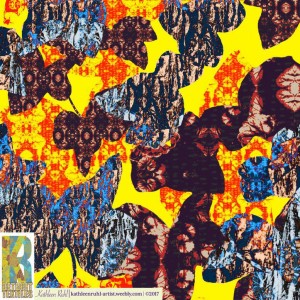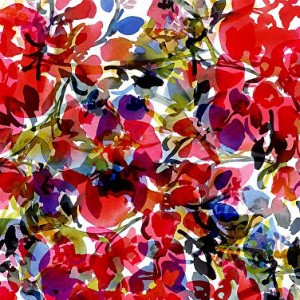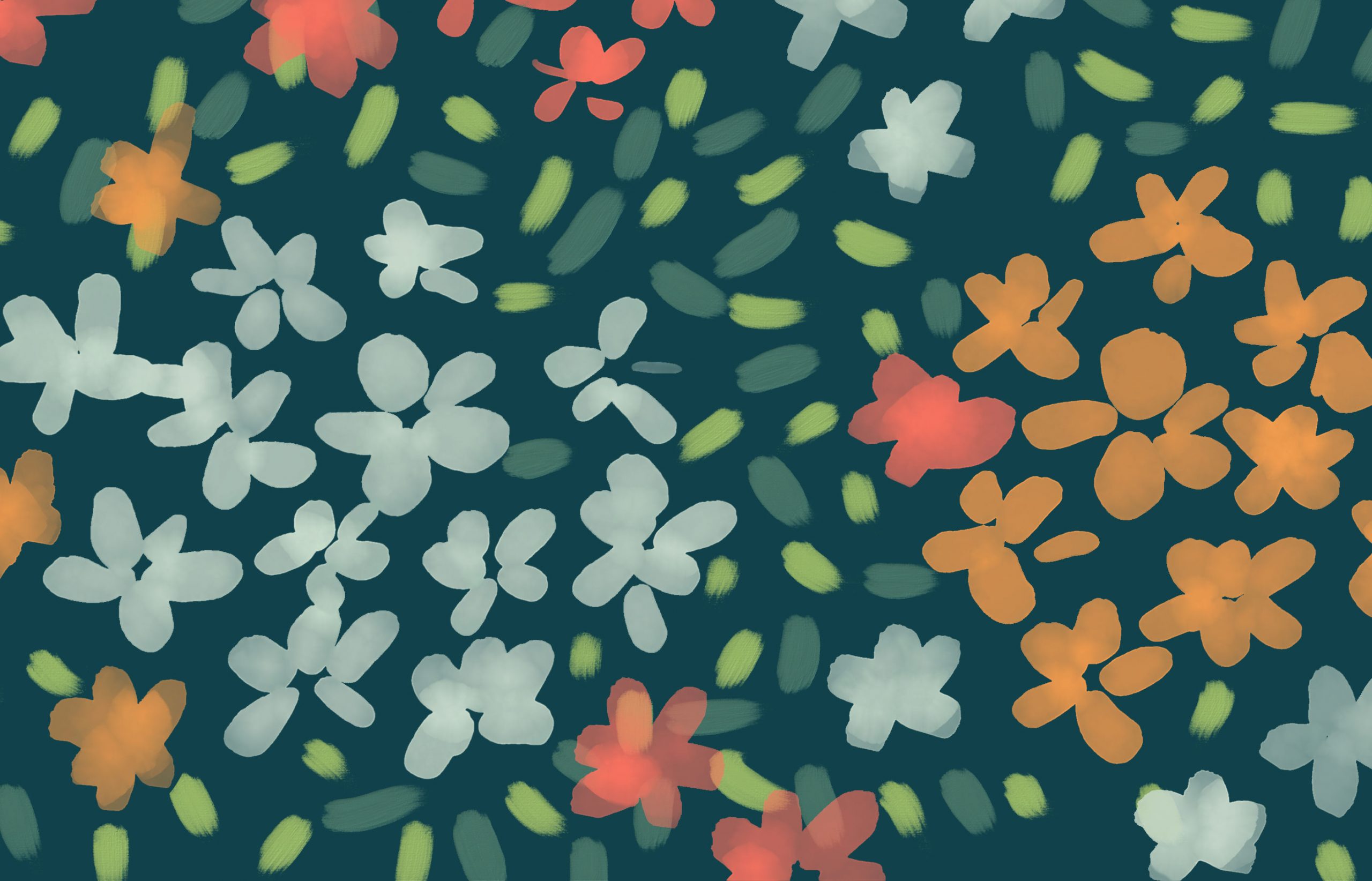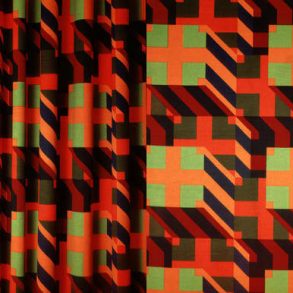Florals are one of the most popular motifs in our industry, but when I mention florals to some designers, it is often followed by a frustrating sigh. Then perhaps a comment such as, “But I am so not a floral person.”
I get it. At one point in time, I also categorized myself as “anti-floral.”

Are you ready for a challenge? I challenge all you “non-floral” designers to create a floral that is you. Not because you have to make florals to make it in this industry, but because your unique perspective and point of view is valuable. It will likely lead to unique, eye catching work. Florals don’t have to be overly sweet, classic, or vintage. They can be bold, emotive, layered, and 100% “you.”
Let’s look at some of the unique florals that I observed this week:
Expressive Line Weight
This beautifully delicate, yet bold floral from Textile Design Lab member Kevin Brackley quickly caught my eye. The expressive line weight variation and detailed background texture all work together to create a very bold, dynamic floral that I feel appeals to those who prefer a bolder take on the traditional floral.

Pattern Fills
Not everyone might read this stunning pattern from Textile Design Lab member Kathleen Ruhl as a floral, but the abstract stem and petal motifs are very floral-like—with an almost camouflage twist. I was really drawn to the pattern fills, bold colors, and various layers that Kathleen included in this pattern. It’s a wonderful example of making a floral pattern that doesn’t feel overly floral or delicate. Like the floral from Kevin Brackley, I think the layering of motifs brings so much depth and dimension to the piece.
Abstract Motifs
To continue to study the benefits of layering within your florals, this piece by Textile Design Lab member, Pamela Gatens is definitely an eye-catcher. The more abstract floral motifs are a wonderful variation on traditional floral motifs. Additionally, the layering of various leaves and stems in various colors keeps the eye searching and moving through the poetic pattern layout.

While we tend to have preconceived notions of floral motifs and patterns, the possibilities are endless. Run wild with the floral category and make it 100% you. Layer, get messy, or stay sweet, it’s all appreciated and accepted.
Florals are just one of the many popular motifs that we discuss in Surface Pattern Design Mastery. In this course you’ll discover:
- The most common motifs used in surface pattern design
- How to gather ideas and inspiration for motifs
- A reliable system for turning your sketches, paintings, illustrations, and photographs into digital motifs in both Illustrator and Photoshop
- Tips to working around some of the common issues that arise during this process, including how to reduce time spent on the technical process so there is more time available to work on creating motifs and designing your surface pattern layout













